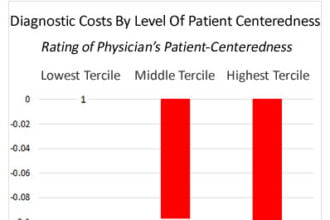Summary: The Affordable Care Act’s health insurance subsidies to low-income people will continue, the Supreme Court ruled. In a much-anticipated ruling on the challenge to the law, the government won. Federal tax subsidies will continue to individuals who qualify by income level and who bought insurance plans relying on subsidies in states that used the federal exchange site, healthcare.gov, as well as states that built their own exchanges, in a decision in the case King vs. Burwell.
If the ruling had gone against the government, people in federal exchange states who won subsidies would have lost their coverage.
So, as of today, this nation has chosen to extend coverage to as many people as possible.
The conversation about that is over, despite what you might hear from those who still oppose the Affordable Care Act.
The Supreme Court ruling underlines that — a decision that was previously taken by the Congress, and by the executive branch. This is the law of the land. Subsidies for lower-income people to allow them to gain coverage that was previously out of reach are legal, the court ruled.
The ruling was 6-3, with Chief Justice John Roberts writing the majority opinion, joined by Justices Sonia Sotomayor, Elena Kagan, Ruth Bader Ginsburg, Stephen Breyer and Anthony Kennedy. In the minority were Justices Scalia, Thomas and Alito.
The heart of the ruling: “In a democracy, the power to make the law rests with those chosen by the people. Our role is more confined—“to say what the law is.” Marbury v. Madison, 1 Cranch 137, 177 (1803). That is easier in some cases than in others. But in every case we must respect the role of the Legislature, and take care not to undo what it has done. A fair reading of legislation demands a fair understanding of the legislative plan.
“Congress passed the Affordable Care Act to improve health insurance markets, not to destroy them. If at all
possible, we must interpret the Act in a way that is consistent with the former, and avoids the latter.”
Now that we have that behind us, let’s focus on the important questions of costs — or charges, or prices, or all three — and effectiveness.
Health care costs nearly 20 percent of our national GDP, and about 20 percent of the average family’s budget annually. That is unsustainable.
Add to that the fact that our health outcomes are worse than those of other developed nations, and you see a catastrophe of epic proportions.
The nation has voted to cover everybody. Now it’s time to fix the really big underlying problems:
- Why does health care here cost so much?
- Why is health care so ineffective?
- Why must people who need care enter the health care system worrying not just about health, but also about money?
- And how can we fix all these problems?
We are not going to engage here the question of whether employer-sponsored health care is the root of all evil, or whether the Affordable Care Act could be better (of course it could be) or whether X legislation passed by Y legislative body at the national, state or local level would be the best solution.
Our first suggestion is price transparency: if all prices are public, all the time, then we can start to see the outlines of a meaningful discussion on value, or effectiveness.
If that MRI could cost $300 or $6,000, should it not be incumbent on the provider to explain why the $6,000 one is 20 times better? Extrapolate that to the rest of the marketplace and you’ll see what we’re after.
Make all prices public: charged prices, cash or self-pay rates, reimbursement rates from various insurers, out-of-pocket portions, out-of-network providers and charges. All of it.
This requires no legislation. It requires honesty, transparency and openness. It’s a practice that is increasing, but is by no means widespread. We’re here to encourage a bigger conversation about why that is, and how we can spread the practice of posting prices.
The Supreme Court ruling marks the end of one chapter and the beginning of another one. There’s work to do to fix the system.
Transparent markets benefit consumers. It’s time.
* * * * * *
So, here’s some background on King v. Burwell:
Here’s the actual decision, in full.
President Obama’s statement, on YouTube.
The Republicans were having a hard time figuring out what they would do to replace the popular subsidies if indeed they were struck down.
What it all means, from Kaiser Health News.
Is this the end of challenges to the law? Probably not. As Julie Rovner and Mary Agnes Carey write in the Kaiser explainer referenced above, it’s not the last challenge, but it’s “probably the most significant one left.”
“In other suits, House Republicans are challenging the money used for the law’s subsidies, saying it was not properly approved by Congress and that the administration did not have the power to delay the law’srequirements that larger employers provide coverage or face a penalty. Additional legal challenges include several dozen cases still pending over birth control coverage,” they wrote.
Drew Altman, head of the Kaiser Family Foundation, predicts that the issue now moves off the front pages until 2016 election.
A Scotusblog piece from last year
Another Scotusblog piece, on state’s rights (love those people!).
How doctors feel about the Affordable Care Act
A ruling striking down the subsidies would have caused the federal budget deficit to skyrocket, Congressional Budget Office says.








